I make amplifiers for guitar or harmonica … Small, just like my workbench !
They are available as separate head …
The layout and the equipment are to be composed “custom” according to your project.
Transistor models feature a real power of 10 or 25W on 8 ohms.
They use a 60s germanium technology, which denies the bad reputation of transistors…
It brings especially a natural compression and a progressive transition to overdrive which have little to envy tubes, with a price also compressed!
I also realize high quality tube models, custom 5 to 15W, with vintage or high-end components where it’s worth and audible.
In both cases my aim is to offer amplifiers intended for home use or small concert venues, without technical weakness, and with a sound that will please the instruments.

GeAmps,
my special germanium amps
I use a proven mounting from the 60s / 70s, well known as an excellent mix of solidity and sound quality … It was then found as well in HiFi equipment as in sound equipment (sound system at Woodstock …).
The original production technology was germanium. The sound was smooth, but it required to sort carefully the components. Seeking easier industrial solutions, western countries abandoned germanium transistors after 1969. On the contrary, they were kept in the USSR, and perfected until the 90s. This is where my stocks come from: components to military standards, so highly reliable … And always excellent from a sonic point of view.

10W amp board using Soviet transistors (personal prototype).
Welcome properties in instrument amplification …
The germanium transistors provide compression of the global signal and in the treble, as well as a progressive entry in saturation. This lets compare them to the operation of tube circuits, and differentiates them from silicon transistors, which are more faithful and constant, but generally quite dull.
Sonic expressivity is my priority
The bad reputation of solid-state guitar amplifiers comes from that since the 70s, they have been confined to the production of low-end equipment, with circuits that are weak in power (which do not hold up) and in technology (with preamps more simplistic than the least of pedals.
Contrary to popular belief, there were very good transistor amps at the end of the 60s: Remember the Vox Defiant and Superbass amps used by the Beatles in 1966-67, the first Santana records, American combos made in the 70s by Randall or Kustom (the original brand, not its current Asian ghost) …
Conversely, some tube amps do not necessarily have the quality they promise, if only because their output transformers are pitiful…
In any technology, you need what you need!

GeAmp10W amp
GeAmp10W is the typical amp to play quietly at home.
• Its germanium power amp uses well-sorted Russian military transistors, which can be safely and musically overdriven.
• The preamp is to be chosen from my available productions like SweetGerm, CurvyMama,
or to be Custom designed…
• The basic configuration includes a line output with loudspeaker simulation as standard.
Possible additions
• Headphone output, direct input to power amp…
• Hammond spring or digital reverb, effect loop with return control.
• Power attenuator interposed between the power amplifier and the loudspeaker output…
GeAmp25W amp
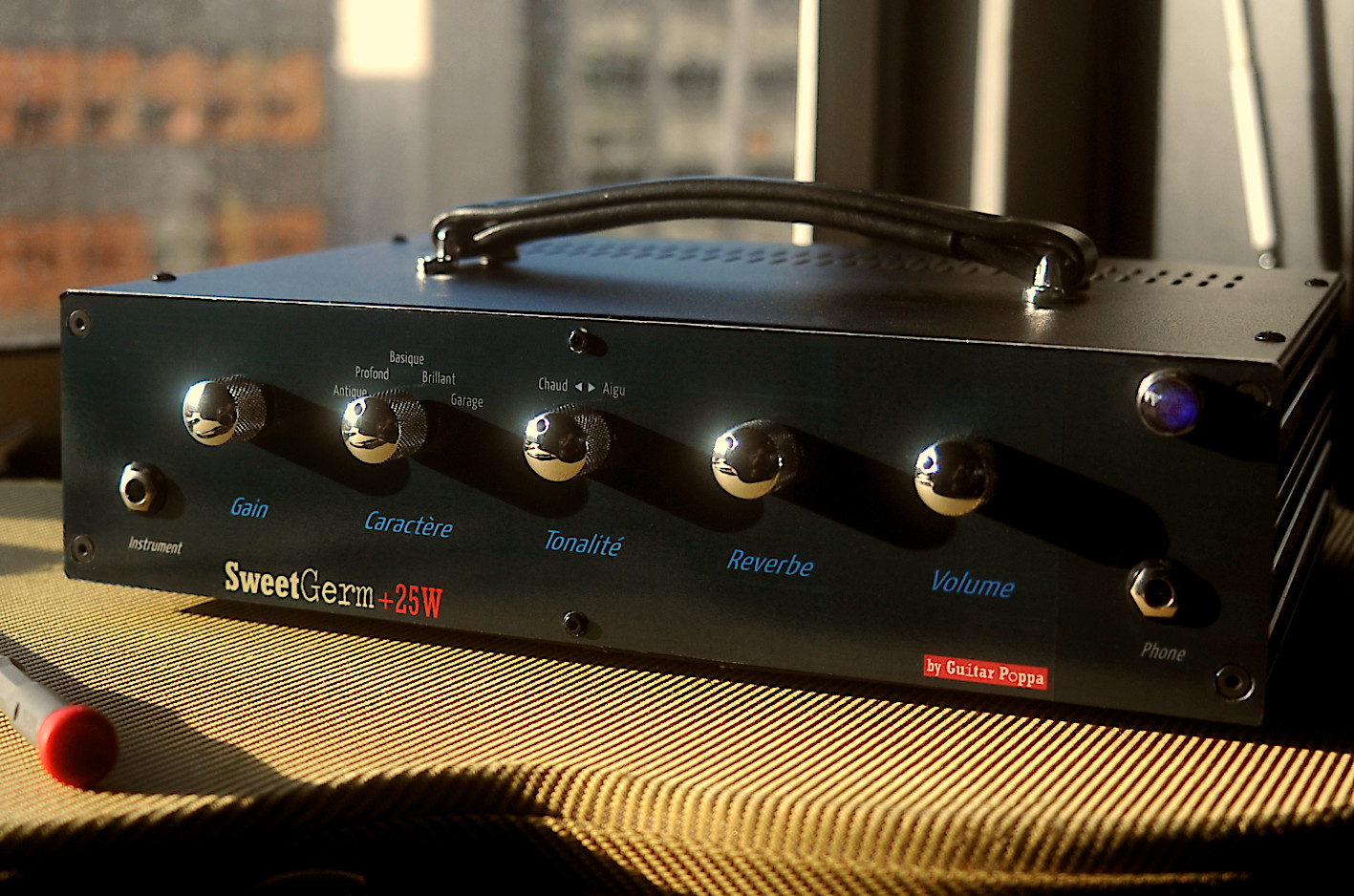
GeAmp25W amp head with a SweetGerm type preamp… (Could be as well 10 watts…)
The customer wanted a very simple One Knob type tone control…
I offered him in addition a switch with 6 presets.
More powerful, it can face small stages and bars...
• The same quasi-complementary assembly is here carried out in Silicium + Germanium hybrid in order to support a higher supply voltage and give more power…
• Germanium is still used in the main amplifier stage and in the power transistors, which preserves the effects of compression and the grit in overdrive.
• Silicon ensures the fidelity of the input circuit and the driving of the output stage.
• Finaly : a surprising 25W amplifier, which has nothing to fear from life!
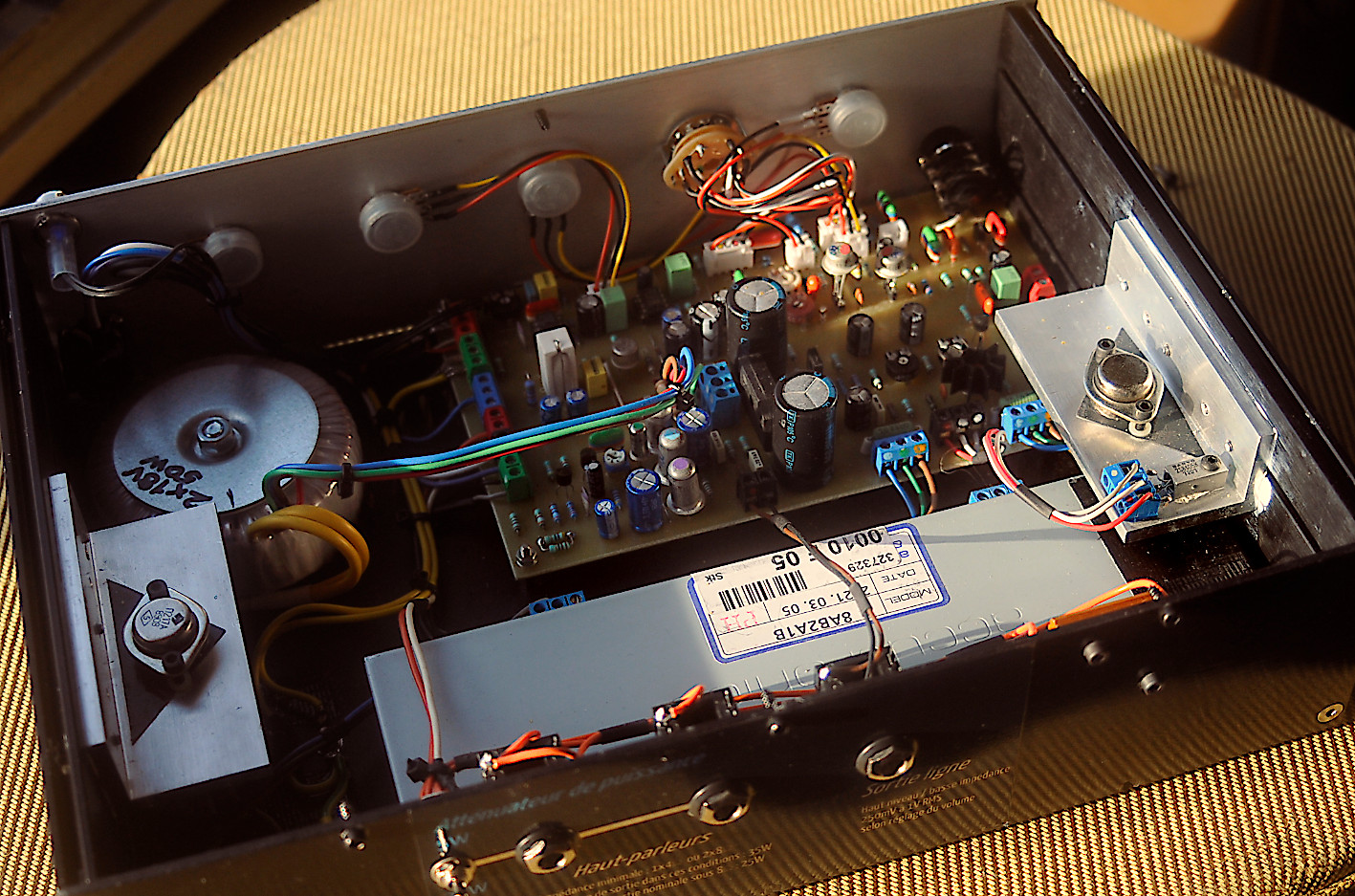
GeAmp25W amp head with a SweetGerm type preamp… Internal view from the back.
In the foreground the Accutronics reverb tank, the power transistors on their dissipators… In the background, the amp-preamp board.
Possible additions
• The preamplifier and the auxiliary circuits are the same as for GeAmp10W.

Box and fronts
• The electronics are protected by a metal casing providing electromagnetic shielding and heat dissipation.
• The front is in 2U Rack (480mm x 88mm) or 3/4 Rack (360mm x 88mm) format.
• The facade can be organized and styled according to customer specifications.
• The graphic realization is printed in laser output on a self-adhesive metallized plastic, and varnished.
Cabinetmaking (on option)
• A frame in Scandinavian birch plywood, professionally painted in black granite, protects the metal casing and knobs from shocks.
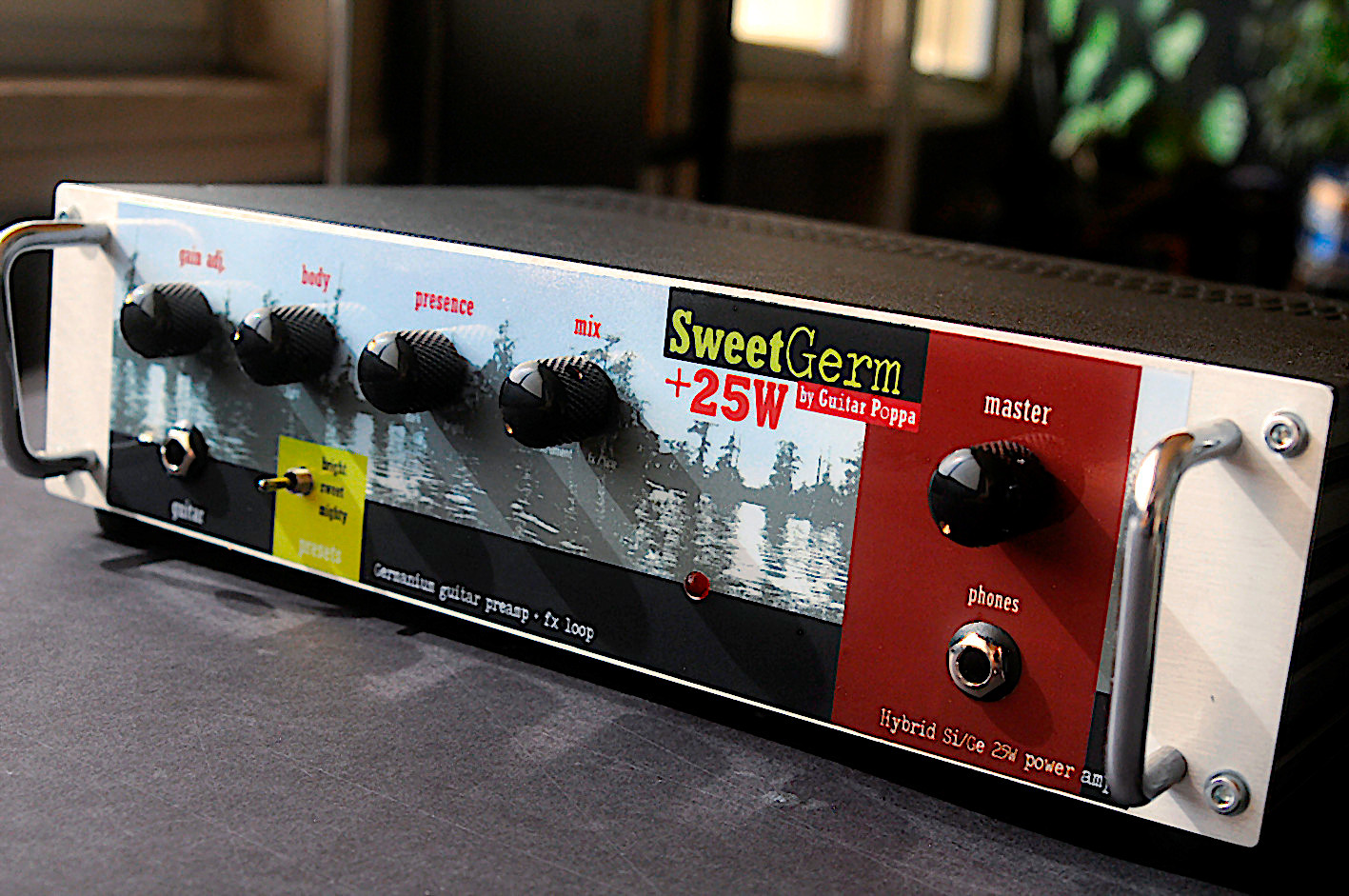
GeAmp25W 3/4 rack amp head (330x88x180mm)
The Louisiana drawing of the facade was decided in conjunction with the client.
The preamp is derived from my SweetGerm stompbox, with an external effects loop requested by the customer …

Special tube amps
Here is a true custom way : models are designed following the customer’s personal order.
Always for material questions — the size of my workbench — I can only make small heads from 5 to 15W …
They will be designed and developed based on the wishes of the customer, who will decide what can be saved and what should be generously considered. My role as designer is then to offer him a coherent whole, responding to his wishes and respecting the rules of the art.
Example: A sophisticated 15W for the stage
It is a 15W head based on the original 1963 Vox AC15, with its wideband pentode input circuit, which gives it a particular grain.
It is completed with circuits improving use on stage: solo booster, effects loop with tone adjustment, loudspeaker attenuator, and line output with speaker simulator.
Old-fashioned point to point realization, plus printed mixing card.
Mercury Magnetics high-end output transformer (model for Fender DeLuxe Reverb, Black Face series)…
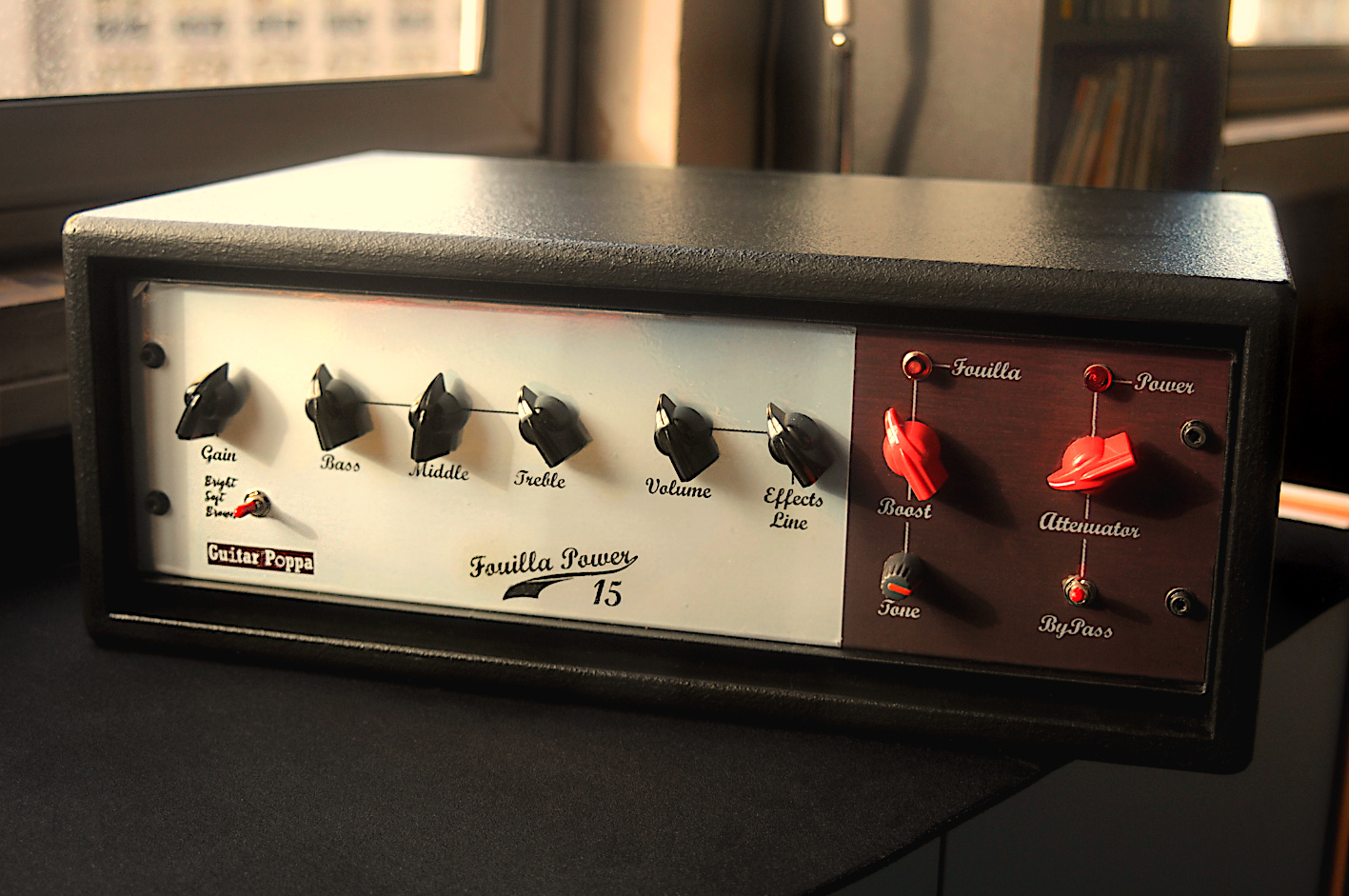
15W Head based on the AC15 from 1963
The client asked for serious options: enough to motivate in-depth custom work!
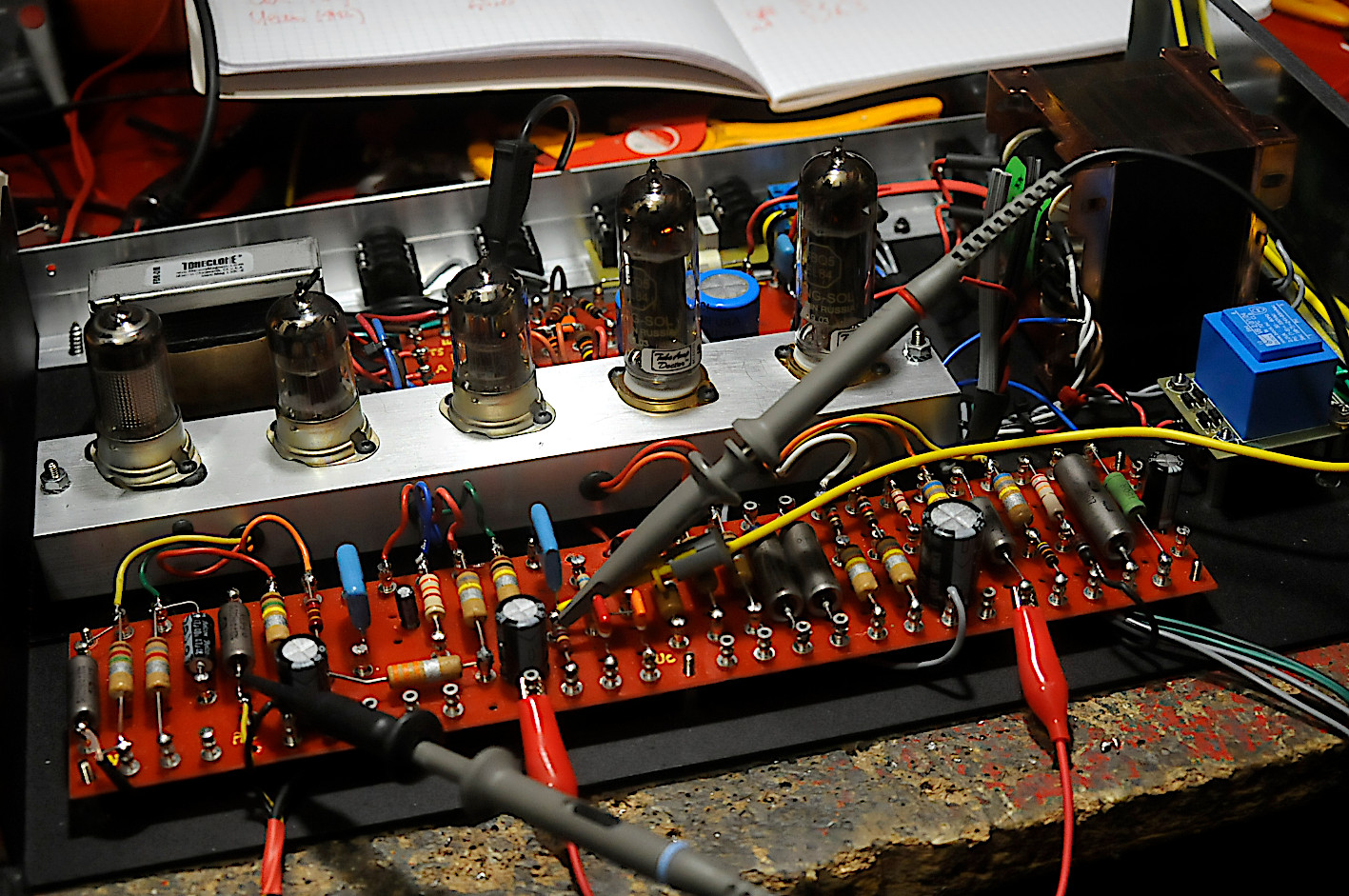
Tube head after the AC15 Vox, sixties version, currently being assembled and tested …
The general circuit board is not yet installed.
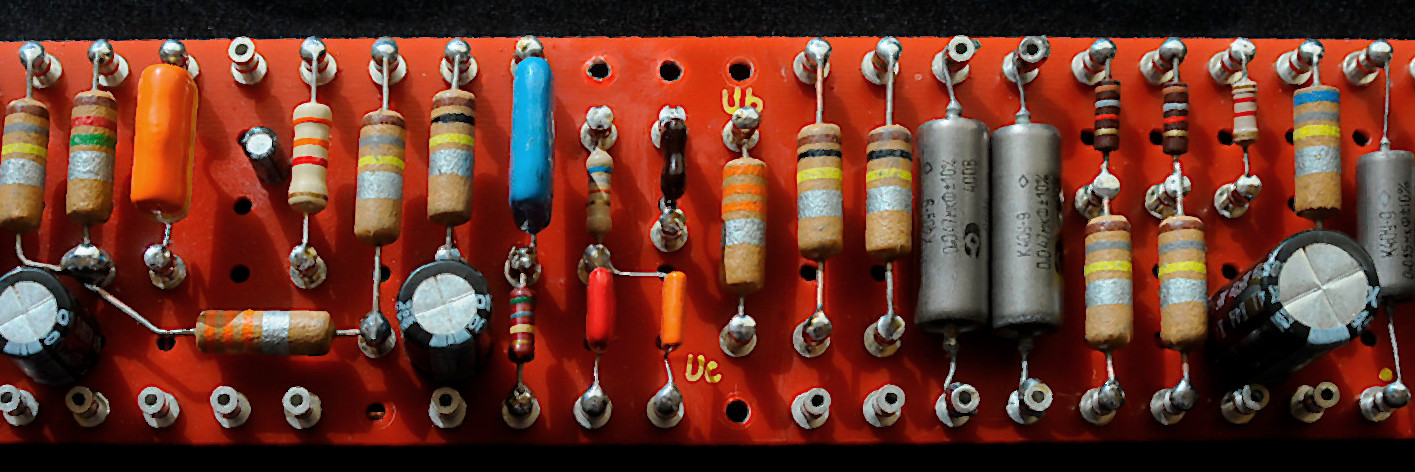
Detail of the main card. NOS components from the 50s to the 70s.
Electrochemical capacitors are contemporary because more reliable at the same price.
The link capacitors at the critical points are Russian military paper in oil models.

At your service ! Tell me your desires…
Guitar Poppa.



